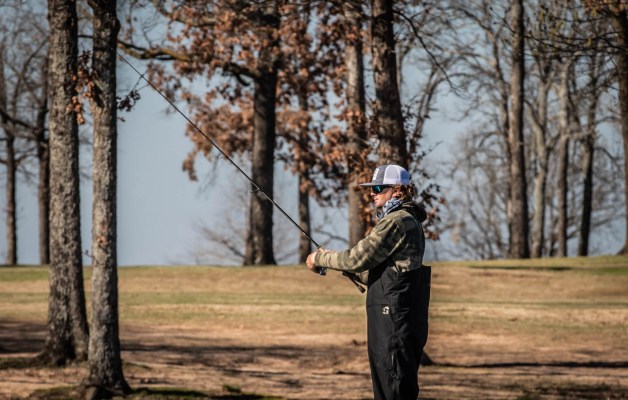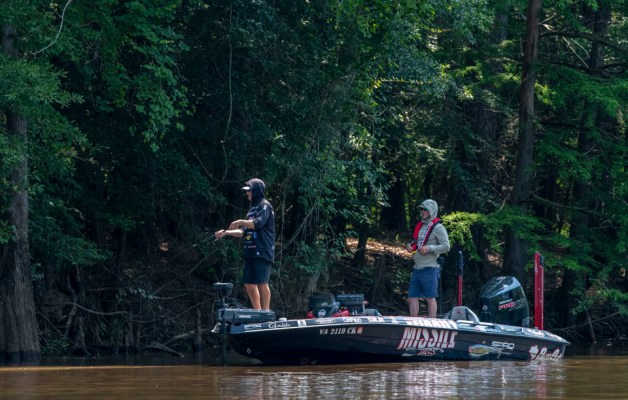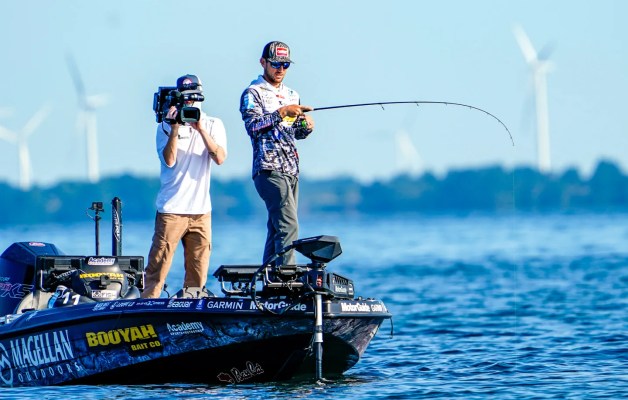Repeat after me: There is no magic lure.
Lures are like tools in a toolbox. They all serve a purpose and any one of them could be exactly the right tool for one job and a terrible choice for the next. Some are more versatile than others, and some are very specialized.
For me, the crankbait is the crescent wrench of your bass fishing toolbox. It's extremely versatile and can do a lot of jobs well.
One of the things I like about the crankbait is that it's such a great search bait. But when I talk about a "search bait," I'm talking about something different from what a lot of other anglers call a "search bait."
When you hear "search bait," you probably think about a lure that's fished horizontally and that you can fish fast and use to cover a lot of water. For that, you might consider a spinnerbait or buzzbait to be a search lure.
That's not what I'm talking about when I talk about a search lure. For me, crankbaits are the ultimate search lures because they not only allow me to cover water like those other baits, but they also send me signals about the bottom and the structure and cover in the area I'm fishing. You can't get that as well from a spinnerbait, and you can't get it at all from a buzzbait.
Yes, I'll use my sonar first to locate an area that I think holds fish, but then I'm going to break out my search bait — a crankbait — and really get the details about that area.
With sidescan technology you can just about pinpoint everything from stumps and logs to rocks and fish, but unless you're some kind of digital ninja, you still don't know just exactly where those things are until you see them with your eyes or — you guessed it — hit them with your search bait.
And guess what? Plenty of times you'll catch a bass or two with that search bait when you're primarily using it to find a piece of cover or learn something about bottom composition.
So, you see a crankbait can do a lot more than just catch bass. It can tell you a lot about the area you're fishing and where you're likely to find bass.
Sometimes that search bait (crankbait) is also the right lure to catch them, but sometimes it's not. Sometimes you'll need to change the diving depth or retrieve speed to get bit. Sometimes you'll have to change bait size or color. And sometimes you'll have to go to a different lure type altogether.
More times than I could ever count, I've located a piece of cover or a subtle drop with my search bait, but not gotten bit on it. Then, when I changed to a jig or plastic worm or something else, I caught bass after bass on that same spot. The search bait was the right tool to find the spot, but not the right tool to catch them.
Plenty of other times I've caught a few bass on the search bait (crankbait) before the action slowed. When that happened, I changed gears on them and started throwing a different bait, color or bait type to the same spot and started catching them all over again.
Bass are individuals and the same thing that tempts one might never tempt another. They can get conditioned, too, so that they won't bite the same lure or color (at least for a while). If you change things up and give them a new look or a different presentation angle, they're ready to go again.
Once I was fishing with a buddy and showing him how I use a crankbait as a search bait. He seemed pretty impressed and said to me, "I bet when you run it over a beer can you can tell if it's Budweiser or Pabst Blue Ribbon!"
"No," I told him, "but I'm pretty sure I can tell the difference between regular beer and light beer." And if you get familiar with your crankbaits — really get to know them and what they can do — you'll get a lot more from them and improve all aspects of your bass fishing.





